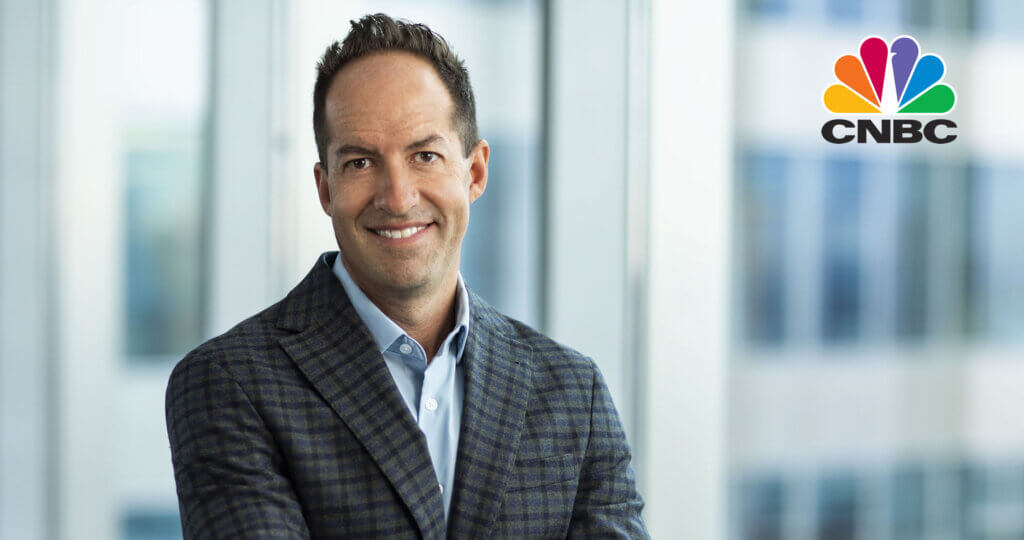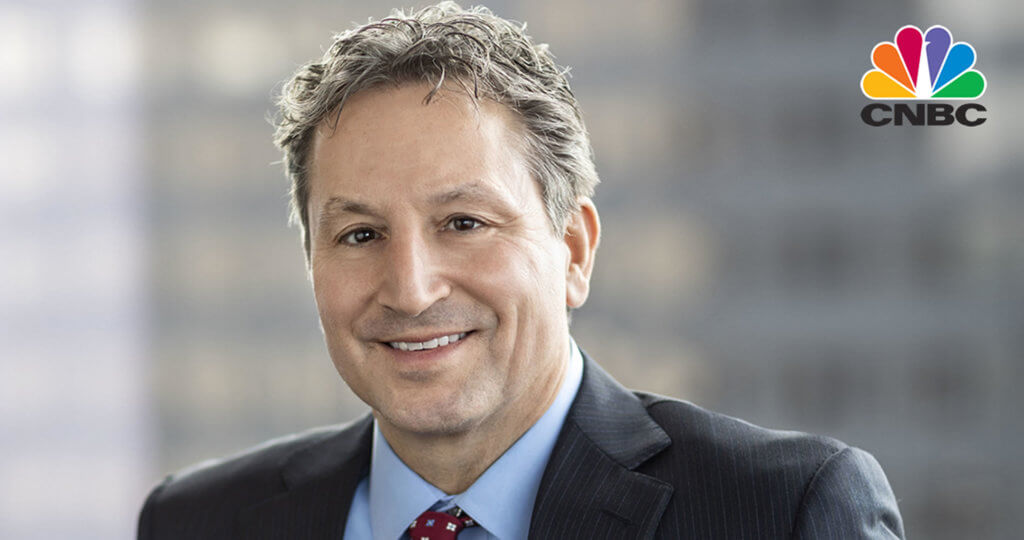Oakmark Global Fund – Investor Class
Average Annual Total Returns 12/31/19
Since Inception 08/04/99 9.94%
10-year 8.60%
5-year 5.96%
1-year 29.60%
3-month 10.77%
Gross Expense Ratio as of 09/30/19 was 1.23%
Net Expense Ratio as of 09/30/19 was 1.17%
Past performance is no guarantee of future results. The performance data quoted represents past performance. Current performance may be lower or higher than the performance data quoted. The investment return and principal value vary so that an investor’s shares when redeemed may be worth more or less than the original cost. To obtain the most recent month-end performance data, view it here.
What a Difference!
Do you still remember December of 2018? Market returns were the worst for a December in more than 80 years! On Christmas Eve of 2018, the downturn in the U.S. intensified in a particularly unnerving fashion. At the intraday low on that day, the U.S. market had declined by 20%—the level generally identified as a “bear market.” As sometimes happens, however, that day’s mini-collapse squeezed the last bit of selling pressure out of the down-cycle, setting the stage for a robust rally in 2019. Technology stocks and more defensive sectors dominated markets for much of this year, but by year’s end, the rally had broadened. Even asset classes other than stocks (e.g., bonds, gold, oil) participated.
The past quarter’s results were particularly strong: The Oakmark Global Fund gained 11% compared to the MSCI World Index’s 9% return and the Lipper Global Fund Index’s gain of 9%. For all of calendar 2019, the Fund returned 30%, which contrasts to 28% for the MSCI World Index and 24% for the Lipper Global Fund Index. Since the Fund’s inception in 1999, it has achieved a compound annual rate of return of 9.9% compared to 5.2% for the MSCI World Index and 5.6% for the Lipper Global Fund Index.
For the quarter, the countries that contributed the most to the Fund’s return were the U.S., U.K. and Germany and the only detracting countries, minimal at that, were the Netherlands and Australia. The five largest equity contributors to return in the quarter were Tenet Healthcare (U.S.), Lloyds Banking Group (U.K.), Bank of America (U.S.), Ryanair Holdings (Ireland) and Travis Perkins (U.K.). The Fund holdings that detracted most were Liberty Global (U.K.), Rolls-Royce Holdings (U.K.), Oracle (U.S.), Johnson Controls (U.S.) and General Motors (U.S.). During the quarter, the U.K. voted in a new Parliament, which will likely complete the arduous Brexit process. This positively affected share prices in several U.K.-domiciled industries, especially banks.
For all of 2019, the U.S., U.K. and Switzerland contributed most to investment return, while Mexico, the Netherlands and Australia, all countries where the Fund owns only one holding, detracted. Leading return contributors for the year were Mastercard (U.S.), Bank of America, Citigroup (U.S.), Lloyds Banking Group and Julius Baer Group (Switzerland). Grupo Televisa (Mexico), Prosus (Netherlands), Rolls-Royce, Incitec Pivot (Australia) and National Oilwell Varco (U.S.) detracted most from return.
We are obviously pleased with the Fund’s 2019 absolute return, which is tied for the fourth-best year in the Fund’s history. When 2019 began, we very much liked our holdings, but we did not forecast the substantial multiple expansion that would generate our excellent return. Some readers may be surprised that a nearly 30% return would only be the fourth-best year in the Fund’s 20-year history, but this simply illustrates that stocks are volatile. Many investors abhor volatility, but we believe that managing it is part of our job. Volatility goes in both directions, and given the unpredictability of the markets, we believe it is best to stay invested to the limits of your risk tolerance.
Portfolio Activity
Five years ago in this report, we wrote: “At the end of the year we often read quotes such as this from the December 31 New York Times: ‘Trading was slow [on December 30] as most investors have closed their books for 2014.’ For us as mutual fund managers such a statement is totally perplexing if not absurd. Every hour that equity markets are open for trading we look to improve the Fund whether by tactical adjustments to Fund holdings or through taking advantage of new opportunities that the markets provide. This does not, however, mean that our process typically involves heavy trading, as the Fund’s turnover ratio for the past twelve months attests.”
We include this paragraph here because it applies to 2019, too. Once again, the portfolio turnover rate was quite low (19%), which clearly did not impair the Fund’s ability to generate a strong positive return. But this low turnover rate is deceiving. It obscures our frequent tactical trades that seek to take advantage of intraday price moves along with our trades that are intended to improve the Fund’s tax efficiency. Given that we seek to hold a security for about three to five years, our shareholders should expect annualized turnover ratios between 20 and 33%. But understand that our entire investment team is continuously striving to identify superior opportunities with which to populate the portfolio.
We kept the Fund’s balance between international and U.S. stocks relatively constant during the quarter. We initiated one new holding while also eliminating one, and both were U.K. companies. We completed the sale of our long-held (17 years) holding in Diageo due to its increasingly expensive valuation. We are always sad to exit a holding that has successfully compounded value for the Fund’s shareholders. Nevertheless, our discipline demands that when the share price nears our calculation of the holding’s intrinsic value, we prepare to move on, especially when we have replacement candidates selling at large discounts. We thank the management of Diageo for their successful stewardship of our shareholders’ capital.
Rolls-Royce was the one new purchase in the period. The company is a leading producer of engines for the aerospace sector, and it is particularly exposed to wide-body aircraft, where it operates in a duopoly with General Electric. The wide-body market is coming up on a strong replacement cycle. In fact, we estimate that 50% of Rolls’ incremental wide-body engine deliveries will come from replacement demand. In civil aviation, the net present value of a new aircraft engine platform involves years of accumulating losses during the development and early production phases, which is followed by a lucrative aftermarket stream (what is referred to as the “razor and razorblade model”). Rolls’ current levels of profitability and cash flow are depressed because it is participating in two simultaneous, major development/ramp-up projects while it also addresses its internal inefficiencies. We expect the company’s profitability and free-cash-flow generation to improve over the next three years as development costs normalize and the lucrative aftermarket stream begins to contribute. Moreover, we believe there is significant scope for self-help initiatives as CEO Warren East overhauls a weak management team, improves accountability and modifies incentives to emphasize cash-flow generation. We believe the market is overly concerned with short-term profitability and cash flow, particularly given the numerous opportunities to improve both metrics over the medium term. We see a very favorable risk/reward profile, so we established a position during the quarter.
Currency Hedges
We defensively hedge a portion of the Fund’s exposure to currencies that we believe to be overvalued versus the U.S. dollar. As of quarter end, we found the Swiss franc to be overvalued and have hedged approximately 10% of the Fund’s franc exposure.
Thank you for being our partners in the Oakmark Global Fund. Please feel free to contact us with your questions or comments.
The securities mentioned above comprise the following percentages of the Oakmark Global Fund’s total net assets as of 12/31/19: Bank of America 4.8%, Citigroup 3.6%, Diageo 0%, General Electric 0%, General Motors 3.8%, Grupo Televisa ADR 1.6%, Incitec Pivot 2.1%, Johnson Controls 1.0%,Julius Baer Group 3.2%, Liberty Global Cl A 1.7%, Liberty Global Cl C 0.6%, Lloyds Banking Group 3.8%, Mastercard Cl A 5.2%, National Oilwell Varco 1.6%, Oracle 2.5%, Prosus 0.5%, Rolls-Royce Holdings 1.9%, Ryanair Holdings ADR 3.2%, Tenet Healthcare 2.3% and Travis Perkins 1.9%. Portfolio holdings are subject to change without notice and are not intended as recommendations of individual stocks.
Access the full list of holdings for the Oakmark Global Fund as of the most recent quarter-end.
The net expense ratio reflects a contractual advisory fee waiver agreement through January 27, 2020.
The MSCI World Index (Net) is a free float-adjusted, market capitalization-weighted index that is designed to measure the global equity market performance of developed markets. The index covers approximately 85% of the free float-adjusted market capitalization in each country. This benchmark calculates reinvested dividends net of withholding taxes. This index is unmanaged and investors cannot invest directly in this index.
The Lipper Global Fund Index measures the equal-weighted performance of the 30 largest global equity funds as defined by Lipper. This index is unmanaged and investors cannot invest directly in this index.
The Fund’s portfolio tends to be invested in a relatively small number of stocks. As a result, the appreciation or depreciation of any one security held by the Fund will have a greater impact on the Fund’s net asset value than it would if the Fund invested in a larger number of securities. Although that strategy has the potential to generate attractive returns over time, it also increases the Fund’s volatility.
Investing in foreign securities presents risks that in some ways may be greater than in U.S. investments. Those risks include: currency fluctuation; different regulation, accounting standards, trading practices and levels of available information; generally higher transaction costs; and political risks.
The percentages of hedge exposure of each foreign currency are calculated by dividing the market value of all same-currency forward contracts by the market value of the underlying equity exposure to that currency.
The discussion of the Fund’s investments and investment strategy (including current investment themes, the portfolio managers’ research and investment process, and portfolio characteristics) represents the Fund’s investments and the views of the portfolio managers and Harris Associates L.P., the Fund’s investment adviser, at the time of this letter, and are subject to change without notice.
Harris Associates L.P. does not provide tax or legal advice. Please consult with a tax or legal professional prior to making any investment decisions.
All information provided is as of 12/31/2019 unless otherwise specified.








